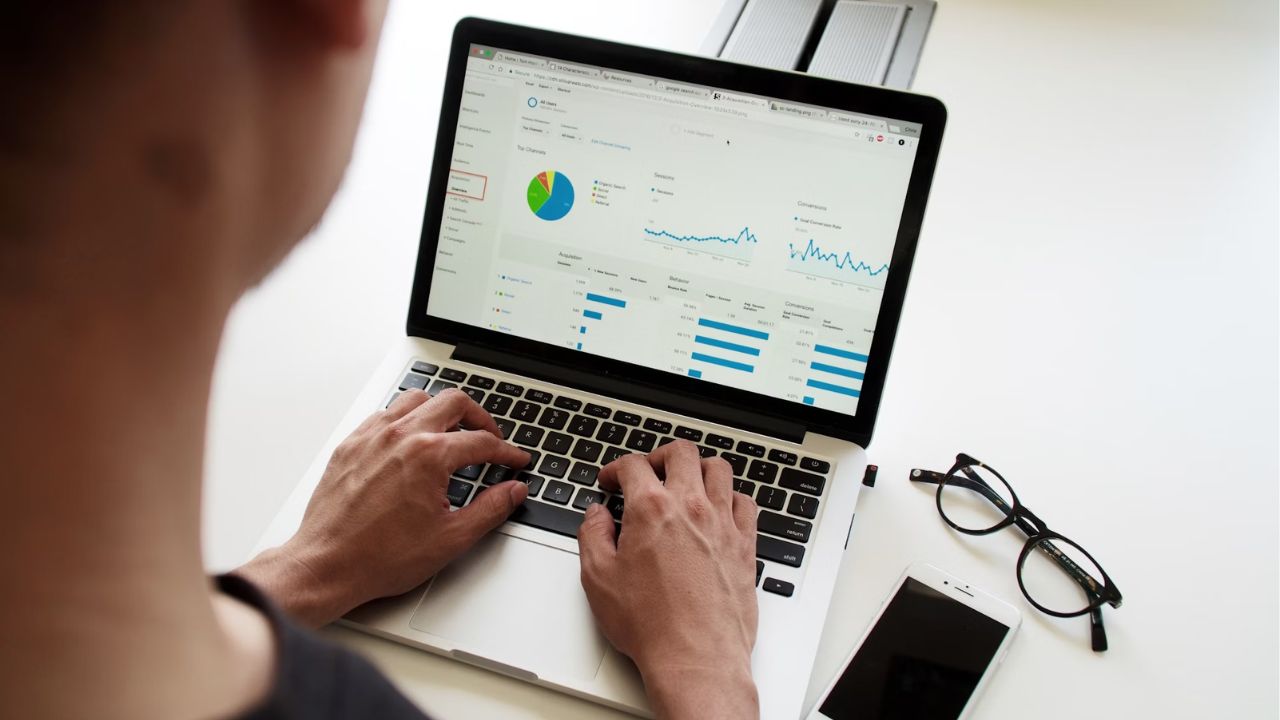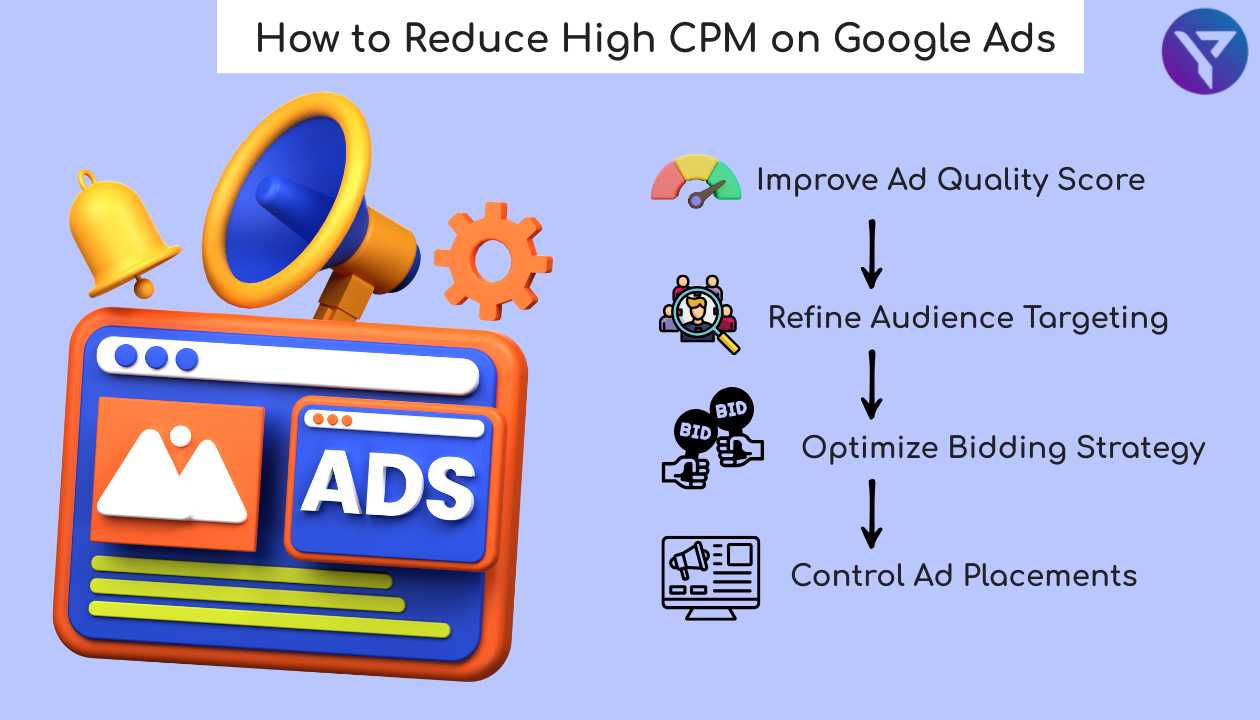
Cost Per Thousand Impressions: Cost Per Mille (CPM) in Google Ads focuses on charging advertisers for every 1,000 impressions, making it ideal for campaigns focused on brand awareness rather than direct conversions or clicks. Similarly, cost per impression (CPI) is the cost incurred by a company per impression.
Broad Reach with Controlled Budgeting: CPM allows advertisers to reach a large audience within a set budget, ensuring your ads are seen by thousands, though it doesn’t guarantee interaction or engagement with the audience.
Effective for Visual and Display Ads: Google Ads CPM works particularly well for display ads and retargeting campaigns, where visibility and brand exposure are the primary goals over immediate actions like clicks or conversions.
Cost Per Mille (CPM) or cost per thousand impressions (again, CPM) in Google Ads refers to the cost an advertiser pays for 1,000 impressions of their ad. Unlike Cost Per Click (CPC), where advertisers pay per user interaction, CPM focuses purely on visibility, making it a crucial metric for brand awareness campaigns. In Cost Per Impression (CPI), the company pays for every impression, whether the target audience clicks on the ad or not.
High CPM can significantly impact budget efficiency, limiting reach and increasing advertising costs. Various factors influence CPM, including competition, audience targeting, seasonality, and ad relevance. While some of these factors, like bid strategies and ad quality, are controllable, others, such as market trends and industry demand, are beyond an advertiser’s control.
This article explores the 10 key factors that contribute to high CPM in Google Ads, helping advertisers understand why their costs may rise and how to optimize campaigns for better efficiency.
By managing these factors strategically, businesses can improve ad performance while keeping CPM under control. Google advertising cost depends on many factors, such as the industry, campaign strategy, bidding approach, and more.

Ultra-specific audience targeting can drive up CPM as multiple advertisers compete for a limited pool of users. For instance, targeting “C-suite executives in San Francisco” results in higher bids since this group is highly sought after by B2B marketers.
While hypertargeting improves relevance, it’s essential to determine when it’s worth the extra cost—such as in high-value conversions—versus when broader targeting could reduce CPM without sacrificing performance.
Certain audiences naturally come with a higher price tag due to strong advertiser demand. Expensive segments include:
Balancing audience targeting with affordability requires a mix of broad and niche targeting, as well as testing alternative segments that might yield lower CPM.
Industries like finance, SaaS, and eCommerce often experience high CPM due to intense bidding wars. B2B and high-ticket industries face even steeper competition, making cost-effective targeting crucial.
To manage CPM, advertisers can refine their niche, use bid adjustments, and explore underutilized keyword segments to reduce direct competition.
Retargeting small audiences leads to higher CPM because of limited ad inventory and high demand. For example, if a website has only 5,000 past visitors, advertisers bidding for impressions on that audience will drive up costs. To mitigate this, expanding retargeting lists through broader lookback windows or using lookalike audiences can help lower CPM while maintaining ad effectiveness.
Google Ads assigns a “Quality Score” to each ad based on relevance, expected CTR, and landing page experience. Low engagement signals, such as a poor CTR, force advertisers to bid higher to maintain visibility. To improve Quality Score and reduce CPM, advertisers should:
The choice of ad format and placement significantly impacts CPM. Premium placements, such as top-tier display network sites or high-traffic YouTube channels, tend to have higher costs.
Ad format also plays a role—video ads usually have higher CPMs than static banner ads due to increased engagement. Additionally, mobile CPMs can differ from desktop, with mobile often being cheaper but sometimes leading to lower conversions.
Effective for Visual and Display Ads: Google Ads CPM works particularly well for display ads and retargeting campaigns, where visibility and brand exposure are the primary goals over immediate actions like clicks or conversions.
To optimize costs, advertisers should test multiple placements, exclude expensive underperforming options, and adjust bids based on performance.
CPMs typically surge during Q4 (October–December) due to events like Black Friday, Cyber Monday, and Christmas, when advertisers compete for limited ad inventory. This increase in demand drives costs up significantly. To navigate seasonality effectively:
Note that during peak demand periods, cost per impression is also high, just as cost per mille is high.
Bid strategy directly affects CPM. Automated strategies like Maximize Conversions may increase bids aggressively, leading to higher costs, whereas manual bidding with bid caps can provide more control. To optimize budgets, advertisers should:
Broad Reach with Controlled Budgeting: CPM allows advertisers to reach a large audience within a set budget, ensuring your ads are seen by thousands, though it doesn’t guarantee interaction or engagement with the audience.
CPM rates vary significantly by location due to differences in ad competition and economic factors. For example, advertising in the USA tends to have a much higher CPM than in countries like India or Indonesia. To control costs, advertisers can:
CPM also fluctuates based on the device type. Desktop ads often have higher costs due to better engagement, while mobile ads can be more affordable but sometimes lead to lower conversion rates. Tablets, in some cases, have the highest CPMs due to their unique user base and limited inventory. Advertisers can optimize costs by:

Managing CPM effectively requires strategic adjustments in targeting, bidding, and ad quality. Here are key tactics to reduce high CPM and improve cost efficiency:
By implementing these strategies, advertisers can effectively lower CPM while maintaining ad performance and visibility.
Google advertising cost can be optimized to a great extent just by choosing relevant keywords and monitoring campaign performance regularly.
High CPM isn’t always a bad thing—it can be worthwhile when targeting premium audiences, high-intent users, or competitive industries where conversions justify the cost. However, if CPM is driving up ad spend without delivering strong results, adjusting strategies is essential.
Optimizing audience targeting, bidding tactics, and ad placements can help control costs while maintaining performance. The key is to balance CPM with audience quality and conversion potential, ensuring that every advertising dollar you pay as Google advertising cost delivers maximum ROI. Instead of just lowering CPM, focus on improving overall campaign efficiency.
Empowering businesses to optimize their conversion funnels with AI-driven insights and automation. Turn traffic into sales with our advanced attribution platform.



